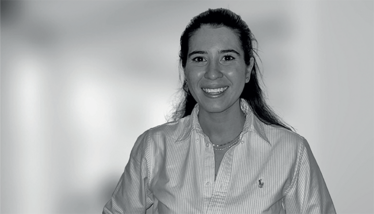
Chapter 6: Protect IP – ASAP!
Life science patent specialists Alice Jefferies and Simon Kiddle present their quick start guide to looking after your most precious asset: intellectual property
Rich Whitworth | | 6 min read | Learning
Presented by The Translational Scientist × Cytiva

Welcome to Chapter 6 of our ongoing series that explores the main challenges you may encounter on your personal journey through translational research and onto success. So far, we’ve outlined the potential hurdles and high jumps ahead, tackled the need for a transformative idea, considered funding and investment, thought about a shift in gear to GMP, and told you how to sell yourself. (And the whole series has been collated for your convenience.)
In short, we’ve cracked some tough nuts with the help of our esteemed mentors. Now, we turn our attention to a topic that’s easy… to get wrong. Chapter 6 explores the why, when, and how of protecting your baby (research) – now and in the future. And who better to walk us through the main intellectual property (IP) points than Alice Jefferies and Simon Kiddle from “forward-looking IP firm” Mewburn Ellis.
What’s the best piece of IP advice for translational scientists?
The most important thing for translational scientists to think about when considering any potential IP is to really understand what the most important, innovative aspect of the work is – and that raises a whole host of basic but hugely important questions: What has been done before? What have you improved with your invention? Why hasn’t anyone tried it before? What problem does it solve? How could it be used/applied?
Scientists are inevitably experts as far as their own innovation is concerned, but considering these questions before embarking on any IP project can help secure and strengthen their position from the get-go.
What are some of the main pitfalls that scientists fall into?
Much of IP and patent law relies on dates of disclosure. Why? Because, when filing a patent application, you state that the contents have not yet been divulged to the public and that you are the first to attempt such work – this even applies to your own work. It’s really important to discuss any intention for publication – for example, journal articles, conference abstracts, informal lectures, internet disclosures – with a patent attorney.
When should translational scientists start thinking about IP?
ASAP! In fact, many of the spin-out companies we work with are born from patented technology we have procured for universities and research institutions!
Meet Your Mentors, Alice Jefferies and Simon Kiddle
Alice Jefferies has industrial experience – gained at a drug delivery start-up – as well as experience working in collaborative academic research at the Francis Crick Institute. Alice’s areas of expertise include immunotherapy, metabolism, stem cells, and antibodies. During her Masters at Imperial College London, Alice carried out a project investigating the impact of immunotherapy on the haematopoietic stem cell niche in acute myeloid leukemia. Today, Alice is a Patent Technical Assistant at Mewburn Ellis, working in the life sciences sector.

Simon Kiddle has more than 30 years’ experience in original patent drafting, patent strategy, oppositions and appeals, and due diligence work across the life sciences field. Simon has worked on the portfolios that comprise many top selling biologics and has been at the forefront of patenting in the field of precision medicine and life cycle management for therapeutics. A Partner at Mewburn Ellis since 1997, Simon heads up the firm’s Life Sciences practice group and is a member of the management board.

What steps should people take to smooth the process?
Sharing the “story” of how an invention came to be can be really useful when drafting a patent for scientists. Thinking about the story can help identify and define the true inventiveness of the technology in question. Often what a scientist may think is the “main invention” or even primary application of the invention may not be the case at all. Likewise, one invention may actually be made up of multiple patentable inventions, thus diversifying the IP portfolio and broadening the potential scope for protection.
Given that translational science moves forward by definition, how can scientists ensure continued protection for improvements to therapies or devices?
It is common for work to continue on an invention and for improvements to be made. It is possible to file new patent applications that originate from or disclose material present in previous applications by adding additional features or methods, if a technical advantage can be demonstrated. In this way, it is possible to add improvements made to a therapy, device or process into new applications, usually as long as this is done within 12 months of the first application. Multiple applications also help broaden and diversify protection.
Who should translational scientists turn to for advice?
Most universities and research institutions have in-house IP teams that can offer advice at all stages of the process. Indeed, in-house instruction can help tailor guidance towards the specific commercial interests of the company. Alternatively or additionally, a third party, such as a patent attorney from private practice, can join the conversation at any stage of the IP life cycle. Patent attorneys are scientists too, and so can comprehensively discuss your technology, whilst providing strategic legal and commercial advice. Patent attorneys have detailed experience in writing applications, advising on strategy, and (importantly) getting applications granted to give the broadest possible protection. There is a great deal of law to consider in the application process, and there may be instances where misunderstanding that law can be fatal to the application. Patent attorneys can also advise on technology access through pipeline agreements, technology transfer arrangements, as well as dealing with IP license negotiations, and drafting license documents.
What would you say to a scientist who is keen to research patent law and go solo?
Though scientists may be worried about revealing their exciting research or “secret sauce” to external parties, patent attorneys are bound by rules of conduct that prevent us from telling anyone about your invention without your consent. So the first thing to say is that you won’t have to worry about public disclosures in this situation.
Although anyone can file a patent application, hiring a patent attorney to handle the process can pay dividends. Yes, employing a patent attorney may increase costs in the short term, but it is likely to give you a more secure patent that is able to stand up against legal attack down the road. And a strong IP portfolio is extremely attractive to investors, who often drive scientific development (as per Chapters 3 and 5 in this series!). Bearing these two key points in mind can truly help the longevity of your work.
You can read the growing series of Hurdles and High Jumps articles here

Rich Whitworth completed his studies in medical biochemistry at the University of Leicester, UK, in 1998. To cut a long story short, he escaped to Tokyo to spend five years working for the largest English language publisher in Japan. "Carving out a career in the megalopolis that is Tokyo changed my outlook forever. When seeing life through such a kaleidoscopic lens, it's hard not to get truly caught up in the moment." On returning to the UK, after a few false starts with grey, corporate publishers, Rich was snapped up by Texere Publishing, where he spearheaded the editorial development of The Analytical Scientist. "I feel honored to be part of the close-knit team that forged The Analytical Scientist – we've created a very fresh and forward-thinking publication." Rich is now also Content Director of Texere Publishing, the company behind The Analytical Scientist.















